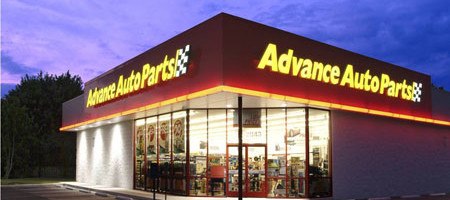Advance Auto Parts: A Golden Opportunity Tarnished by Operational Missteps

Advance Auto Parts’ strength in lean and efficient operations proves to be its undoing amidst a large-scale acquisition.
Introduction
When Advance Auto Parts (NYSE:AAP) announced its acquisition of General Parts International, investors and management alike formed high expectations of the combined businesses’ commercial and financial profile. Since then, AAP’s widely admired operational model has proved to be its Achilles Heel, as the company struggles to manage an unwieldy integration.
Business Model
Advance Auto Parts is the leading supplier of aftermarket automotive parts, accessories and car maintenance items across North America, serving both commercial and “do-it-yourself” customers. 
AAP’s customer promise is two-pronged – the company seeks to deliver best-in-class service and support, and superior product availability. In order to deliver on “getting the right parts to the right place at the right time”[1], AAP has historically leveraged a lean and efficient operating model. This includes (a) a supply chain designed to distribute, store and replenish a high number of SKU’s, and (b) a scale and geographic reach broad enough to offer fleet solutions and serve national accounts.
Over the last twenty years, AAP has performed very well, simultaneously expanding into the commercial market and capitalizing on strong growth in the “do-it-for-me” independent professional segment. Between 1995 and 2015, AAP added over 3,200 stores to operations. Since going public in 2001, AAP has grown nearly 1000% by market capitalization, outpacing the S&P 500 by a factor of 12. [2]
 When AAP announced in late 2013 it planned to acquire competitor General Parts International (“GPI”) for $2.04 billion, the transaction was lauded as transformational. AAP’s stock soared by 50% in the subsequent four months [2]. Management predicted the acquisition would yield increased operational efficiencies driving cost synergies of up to $160 million per year [3], coupled with a broadened ability to serve attractive key customer segments.
When AAP announced in late 2013 it planned to acquire competitor General Parts International (“GPI”) for $2.04 billion, the transaction was lauded as transformational. AAP’s stock soared by 50% in the subsequent four months [2]. Management predicted the acquisition would yield increased operational efficiencies driving cost synergies of up to $160 million per year [3], coupled with a broadened ability to serve attractive key customer segments.
Operational Model
Now over two years after AAP announced its acquisition of GPI, AAP’s once leading operational model is proving to be its own undoing. A myriad of integration challenges on the operations side are creating a drag on corporate performance. They include, but are not limited to:
- Following the consolidation of the two companies’ support centers, over 40% of team members are new and untrained. The support centers have yet to execute at pre-merger levels. [4]
- Many key capability areas within the organization, including field operations and sales support, continue to utilize two separate legacy systems (including parts catalogs, POS systems, and parts availability systems), as the company has taken longer than expected to convert to a common platform.
- Product changeovers, executed via “lift and replace alignment work” [4], continue to pose disruptions across multiple product lines. Symptoms in AAP’s financial statements are evident; AAP has incurred higher-than-expected inventory expenses in recent quarters. More importantly, AAP’s ability to deliver on its promise of availability has been hindered, and risk of market share loss subsists.
While it could be argued that some of the above hurdles are natural consequences of a large-scale acquisition, management’s aggressive predictions for integration and failure to foresee key obstacles have exacerbated these issues. For example, management has admitted it overestimated its ability to retain employees. Each new emp loyee now faces an especially daunting learning curve, having to familiarize him or herself with two discrete legacy systems, postponing their ability to serve customers effectively.
loyee now faces an especially daunting learning curve, having to familiarize him or herself with two discrete legacy systems, postponing their ability to serve customers effectively.
Conclusion
Despite rocky execution, AAP’s acquisition of GPI may prove fruitful if management is able to better streamline the integration process. Recent shuffling on the executive team and Board suggest this is a strategic priority, but it has yet to be seen if AAP can resume performance at its pre-acquisition levels quickly enough to avoid a long-term loss in market share.
Sources:
[1] Advance Auto Parts Investor Day Presentation, April 10, 2013.
[2] NYSE:AAP, Google Finance, Accessed December 6, 2015.
[3] Advance Auto Parts Investor/Analyst Conference Call Presentation, October 16, 2013.
[4] Q3 2015 Advance Auto Parts Inc Earnings Call Transcript, November 12, 2015.




Interested to know whether this is more a winner that’s working to drive through a rough patch or a former winner that’s grossly overestimated their abilities. Are delayed synergy capture and personnel issues enough to prevent them from realizing the value promised by the integrated supply chain post merger? Or is this merely a hiccup that requires more patience? Perhaps a committed management team that is learning into its capabilities might still right the course.
Hey Alison – do you know what the original rationale was for the acquisition? Was General Parts Intl supposed to provide them with a footprint in markets and geographic areas where they didn’t have the same strong customer or supplier relationships? Or were they going to gain a particular competency or product mix they were not able to develop organically? Also wonder whether this is the story of a poorly executed integration of two actually complementary businesses or if this is about a management team trying to combine two fundamentally incompatible operating models and destroying their original competitive advantages in customer service and supplier networks? Thanks for the post!